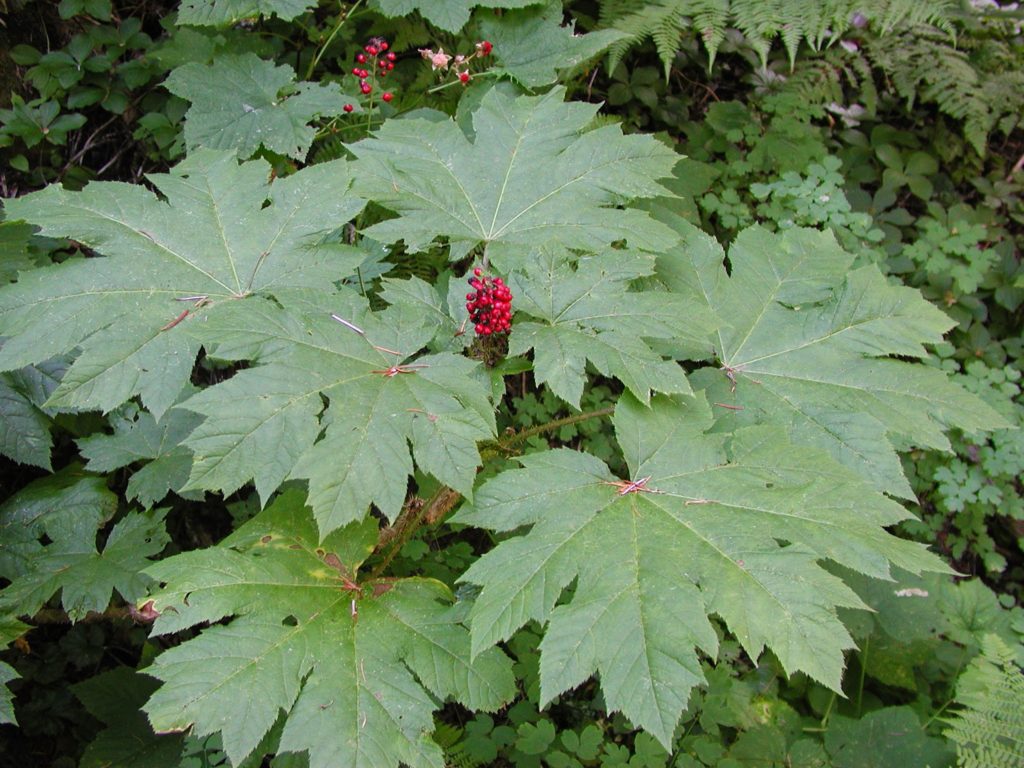Devil’s club (Oplopanax horridus), (Cukilanarpak: Native Alaskan for “large plant with needles”) is mostly found in the moist, cool forests of western North America. Interestingly, it also grows in isolated populations on islands in Lake Superior. They are sensitive to disturbance and slow-growing to reach maturity, so often old growth forests are the place to find them in abundance. If the scientific name doesn’t sound horrifying enough, the common name’s reference to the Devil gives a pretty good idea of the formidable nature of those thorns. In one Tlingit tale, a piece of Devil’s club is tossed behind the hero who is escaping from the moon, and the single piece grows into a thorny, impenetrable wall. A stick of Devil’s club hung above the doorway was believed to ward off evil.
Devil’s club has a history as a traditional herbal medicine of Northwest Native American Tribes with a variety of uses and preparations, including topical ointments and poultices and an oral tea. It is still used today in the treatment of adult-onset diabetes, rheumatoid arthritis, cancer, tuberculosis, colds, depression, stomach issues, lice, burns, and inflammation. Because it is a botanical cousin of Panax ginseng, it is also known as “Alaskan Ginseng”. It also carries powerful spiritual and ceremonial associations.
Last but not least, this is another plant that pertains to bears. Among Northwest Coastal Tribes, Devil’s club was
associated with bears. It was believed that they chewed on the roots to
heal their wounds from battles. Bears are known to eat the red fruits
and spread them around in their droppings, thus propagating the plant.
And here are a few good links I came across about Devil’s club:

Leave a Reply